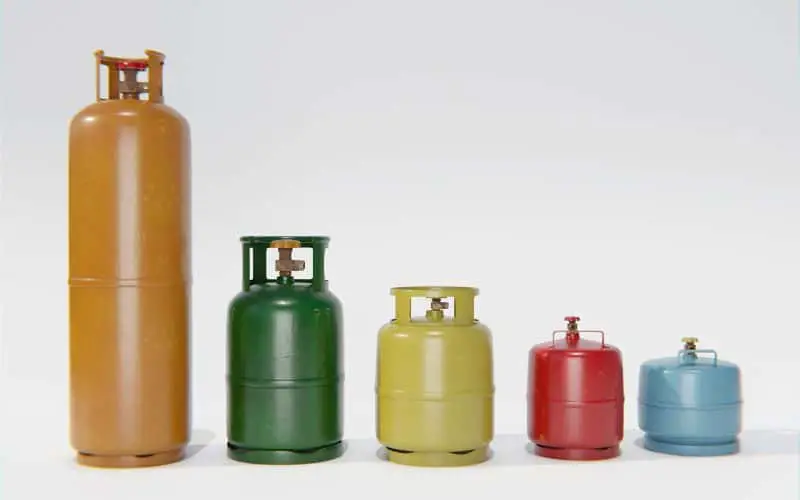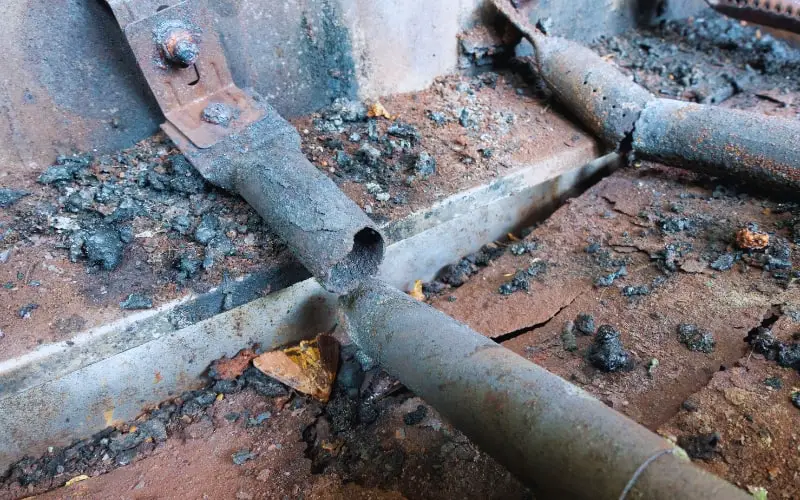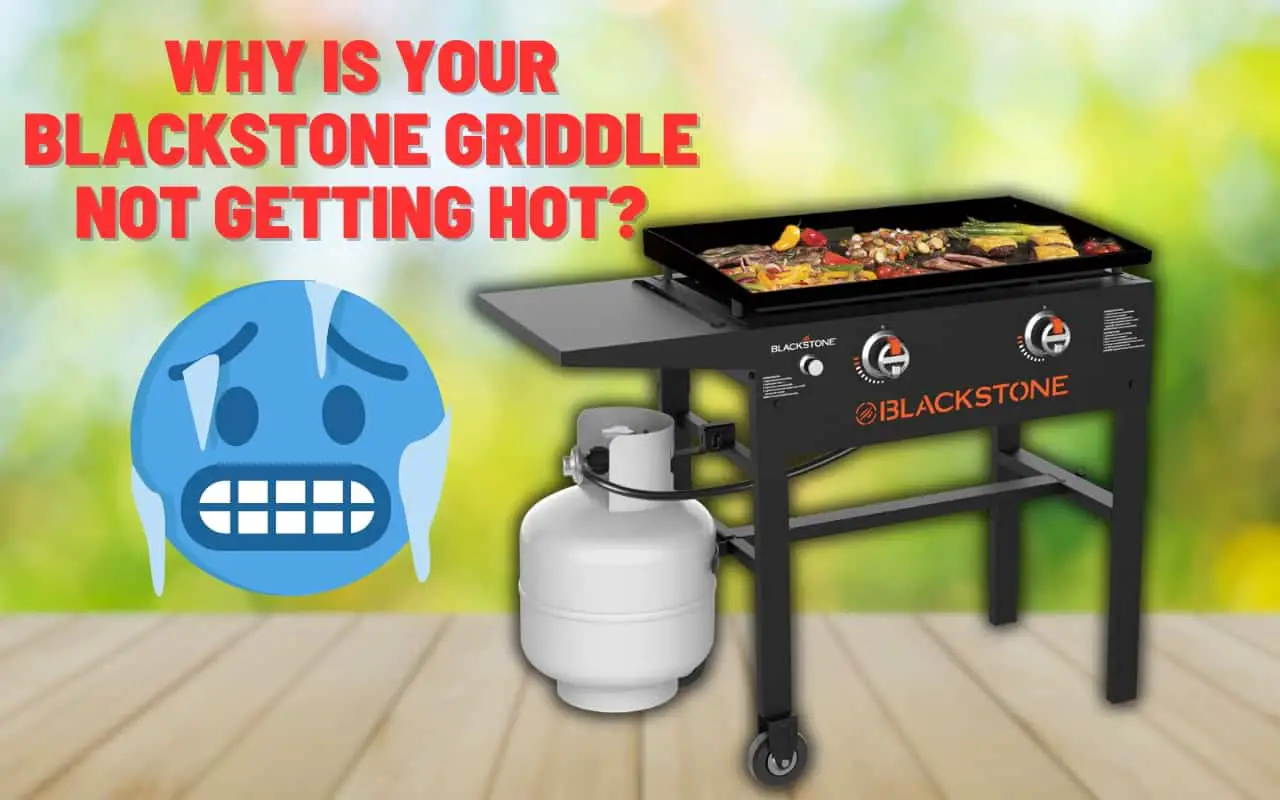Hey there, fellow griddle enthusiasts! Picture this: You’ve just fired up your trusty Blackstone griddle, the marinated steak is ready to sizzle, and your mouth is already watering at the thought of those amazing rib-eye steaks. But then… nothing. The griddle isn’t getting hot enough, the steak remains unseared and instead cooks itself in its juices. You’re left standing there, spatula in hand, feeling like a burger at a vegan barbecue.
Talk about a letdown, right?
But don’t toss in the grilling towel just yet. Griddles can be fickle beasts, and there’s usually a pretty simple explanation and solution to your heating woes. So, before you start questioning your skills, let’s take a look at some common reasons why your Blackstone griddle might not be getting hot enough.
Table of Contents
- Understanding Your Blackstone Griddle
- Common Reasons Why a Blackstone Is Not Getting Hot
- What if Everything Fails?
- Conclusion
- FAQ
Understanding Your Blackstone Griddle
Before we dive into the nitty-gritty of troubleshooting, let’s chat a bit about how your trusty griddle works. Knowing how your griddle works can really help when it decides to give you the cold shoulder.
Your griddle is a lot like that old pick-up truck your grandpa used to drive. You know, the one that ran better on hopes and dreams than it did on gas. It’s got a simple, no-nonsense design that, when treated right, can deliver some seriously delicious results.
- Propane tank – At the heart of your griddle’s heating system is the tank with propane inside. This is like the griddle’s lunchbox. Its job is to provide fuel to burn that in turn heats the griddle.
- Regulator – Connected to the propane tank is the regulator, which is a bit like the griddle’s babysitter. Its job is to control the amount of fuel delivered to the burners, making sure they don’t go overboard and start a food-frying frenzy.
- Igniter – With a press of a button, the igniter creates a spark that lights the griddle or the gas escaping from the burners to be precise. And boom! You’ve got heat.
- Burners – Burners burn propane gas – they’re responsible for transferring the heat from the burning gas to the griddle top.
- Griddle top – Finally, there’s the actual griddle surface. It’s more than just a pretty face. It plays a crucial role in evenly distributing that sizzling heat to your soon-to-be-seared delicacies.
So, now that you’re familiar with the main players in the game. Let’s explore how one of them might be slacking off and leaving your griddle out in the cold.
Common Reasons Why a Blackstone Is Not Getting Hot
So, you’ve got a cold griddle on your hands. Don’t fret! When it comes to a Blackstone not getting hot, there’s usually a rogue gallery of usual suspects to consider.
So, let’s play detective, shall we? We’ll work through this lineup one by one. From bad assembly to propane drama, from temperamental regulators to pesky igniters, from unruly burners to Mother Nature’s mood swings, I’ve got you covered. Ready to dive in? Let’s crack this case wide open!
Incorrect Assembly
Alright, our first suspect in the case of the cold griddle is incorrect assembly. Yep, sometimes the answer is as simple as checking if the griddle has been put together correctly. If the griddle worked fine before, then you can probably skip this step.
Now, I know, nobody likes to admit they might have made a mistake during assembly. It’s like admitting you took a wrong turn five miles back, but you’re still convinced you’re going the right way. But hey, we’re all human. We get distracted, instructions get misplaced (or “accidentally” thrown out), and sometimes, we just get a little too eager to start griddling.
To make sure your griddle is set up for success, grab your instruction manual or find one online if yours has mysteriously disappeared and give it a good read.
You’ll want to check that all the parts are correctly installed, nothing’s loose or missing, and everything is where it should be. Pay special attention to the gas parts, like the propane hose, regulator, and burners. Remember, these are the main players in your griddle’s heating game.
If your griddle wasn’t assembled correctly, don’t sweat it! Take it as a learning opportunity. Reassemble it according to the manual, and before you know it, you’ll be back to griddling adventures. And if everything checks out okay, then we’ve ruled out our first suspect and it’s on to the next one.
Propane Tank Issues

Next on our troubleshooting checklist, we’re turning our detective gaze to propane issues.
First things first, check if your propane tank is empty. If you’re unsure how to check, many propane tanks have a gauge on them that shows you how much propane is left. If yours doesn’t, a quick and easy way to check is by lifting the tank. If it feels lighter than your morning cup of coffee, it’s probably time for a refill.
Jokes aside, you can weigh the propane tank and fairly accurately estimate how much gas you’ve got left. For this to work, you just need to know how much the tank weighs when it’s empty. And that number, my friends, is almost always imprinted on the tank itself. For example, an empty 20-pound tank weighs about 17 pounds and can hold 20 pounds of gas. A full tank then theoretically weighs 37 pounds (it will be less in reality as tanks are not topped up to the max). So, let’s say your scale reads 19 pounds. Then you know you have about 2 pounds of gas left. If it weighs 17 pounds, then you can be certain you’ve got an empty tank. Of course, this is just an example and different propane tanks weigh different amounts.
Obviously, if your tank is empty you will need to have it refilled or exchanged.
But what if your tank isn’t empty? Well, it could be that your propane tank is turned off or not connected properly. Trust me, it happens more often than you’d think, and it’s an easy fix. Just make sure the valve on top of the tank is fully open, and the connection to the griddle is secure.
Take a moment to inspect the hose that connects your griddle to the propane tank, too. If it’s cracked or damaged, you could be losing gas before it even reaches your griddle.
If you’ve ticked all these boxes and your griddle is still giving you the cold shoulder, it’s time to move on to our next potential troublemaker. Let’s talk regulators.
Regulator issues
Now we’ve arrived at the regulator, the gatekeeper of gas flow for your griddle. The regulator’s job is to control the amount of propane that gets to the burners and keep it at a steady pace.
If your griddle isn’t heating up, it could be that the regulator is stuck or faulty. Sometimes, if the propane tank is opened too quickly, the regulator can go into a kind of safety mode, restricting the flow of gas. A telltale sign of tripping this safety feature is low flame on the burners.
If you suspect this is the case, you may try to reset the regulator which is a simple fix:
- Turn off the burners and the propane tank
- Disconnect the regulator and wait a few minutes
- Reconnect everything
- Open the valve on the propane tank SLOWLY so as not to trip the safety mechanism of the regulator again
With any luck, your regulator will have snapped out of its overprotective phase and be ready to let through enough gas once again.
But what if your regulator is just plain faulty? Well, in that case, it might be time for a replacement. You can find replacements online or at your local hardware store.
If you’ve checked the regulator and it’s all good, or if you’ve replaced it and you’re still not feeling the heat, don’t lose hope. We’ve still got a few more suspects to investigate.
Ignition Issues
Let’s move on to the igniter, the spark plug of your griddle, if you will. Think of the igniter as the starting pistol at a race – it sets everything in motion. If it’s not sparking, your burners won’t ignite, and your griddle will be as cold as a winter’s morning.
The common culprits here are usually:
- a flat or missing battery
- an igniter needle set incorrectly
First, check the battery. The igniter on most Blackstone griddles is battery-operated. If that battery is dead, well, there won’t be any sparks flying. Simply replace the battery and see if that solves the problem. A single AA battery is needed.
If your battery is fine, the issue might be with the igniter needle. This is a small part of the igniter that needs to be set just right to create a spark. If it’s set too far or too close to the burner, it might not ignite at all. Refer to your griddle’s manual to see how to adjust the igniter needle correctly.
Check my Blackstone griddle ignition guide:
Still no heat? Don’t worry, we’ve still got a couple more things to check. Let’s turn our attention to the burners.
TIP: If you don’t want to fiddle with the ignition system or are out of AA batteries, you can ignite the griddle with a long lighter or match.
Burner Issues

Next in our lineup of potential heat thieves are the burners. There are a couple of common issues that can affect them.
The first is clogs. Yep, just like your kitchen sink, your burners can get clogged up, too. This can happen if food particles, grease, or even bugs (ew, I know) get into the small holes on the burner where the gas comes out. A clogged burner can’t do its job properly, which means it won’t be able to provide enough heat.
If you suspect your burners might be clogged, it’s time to roll up your sleeves and do a bit of cleaning. Make sure the griddle is turned off and cooled down, then remove the burners (refer to the owner’s manual). You can clean the burners with a soft brush or pipe cleaner to remove any debris. Just be gentle – you don’t want to damage them. Compressed air can be used as well.
The second issue that can affect your burners is the air gate. The air gate controls the mixture of gas and air that feeds the burner. If it’s not set right, your burner might not be getting the right fuel mix to produce heat. It’s like trying to run a marathon on a diet of cookies – you’re not going to get very far. Yellow flames are often the first sign of air gate issues.
You can adjust the air gate according to the instructions in your griddle’s manual. It’s a bit of a Goldilocks situation – not too much air, not too little, but just right.
If your burners are all clear and your air gate is set correctly, but you’re still not getting enough heat, it might be time to consider some external factors. Let’s head outside and check out the weather.
Weather Conditions

Last but not least, we’re taking a look at external factors that might be putting a chill on your griddle’s heating abilities. And when I say ‘external,’ I literally mean outside. Yep, sometimes it’s not your griddle that’s the issue, but good ol’ Mother Nature herself.
If it’s too cold, or there’s a gusty wind, your griddle might struggle to heat up. It’s like trying to sunbathe in a snowstorm – you’re not going to get very far.
If the weather is cold, your griddle will have to work harder to reach and maintain its cooking temperature. If possible, try to use your griddle in a sheltered location, or wait for a warmer day. Yes, it is fun to use your Blackstone in winter but you have to deal with the fact that it might not get as hot as you would like.
Wind can also be a culprit. If the wind is blowing directly into your griddle, it can blow the heat away before it has a chance to build up. Try to position your griddle so it’s shielded from the wind, or consider investing in a wind guard that will allow you to use the griddle comfortably even when it’s windy.
What if Everything Fails?
We’ve investigated all our suspects. If you’ve followed along and your griddle is not getting hot, it might be time to call in the professionals.
Call customer service or send them an email and see what they tell you. In the end, there might be something wrong with the griddle, and may it need to get serviced. If it’s still covered by the warranty, there’s nothing to worry about. If it’s brand new and bought in-store, you might as well bring it back to the store for a replacement.
Conclusion
Alright, folks, we’ve rummaged around the reasons why a Blackstone griddle doesn’t get hot, and hopefully, we’ve warmed things up a bit for you. Troubleshooting can be a bit of a headache. Sure, it can feel like you’re trying to crack a complex code when your griddle decides to act a little frosty, but don’t let it ruffle your feathers. Getting to know your griddle and its ways takes a bit of patience, some detective work, and yes, maybe a touch of good old trial and error.
At the end of the day, your Blackstone griddle is your partner in the culinary world. It’s there to help you whip up everything from mouth-watering steaks to drool-worthy crepes. Show it some love, keep it clean and well-maintained, and it’ll keep serving up the goods.
Keep that spatula flipping, keep your griddle sizzling, and remember, we’re all here to help each other out. Because let’s face it, we’re all just trying to make some delicious food and have a good time, right?
So, until next time, stay hungry, stay curious, and happy griddling!
FAQ
How much does an empty 20-pound propane tank weigh?
An empty 20-pound propane tank typically weighs about 17 pounds. This is just the weight of the tank itself, without any propane. When filled, these tanks hold about 20 pounds of propane, bringing their total weight to about 37 pounds.
Are there any other ways to check the propane levels?
Yes, apart from relying on weight or gauge, you can hot water to check the propane levels. Pour a cup of hot (not boiling) water down the side of the tank. Then, run your hand along the side of the tank. The propane inside absorbs the heat from the water, so the tank will feel warm to the touch where there’s propane and cooler where it’s empty.


